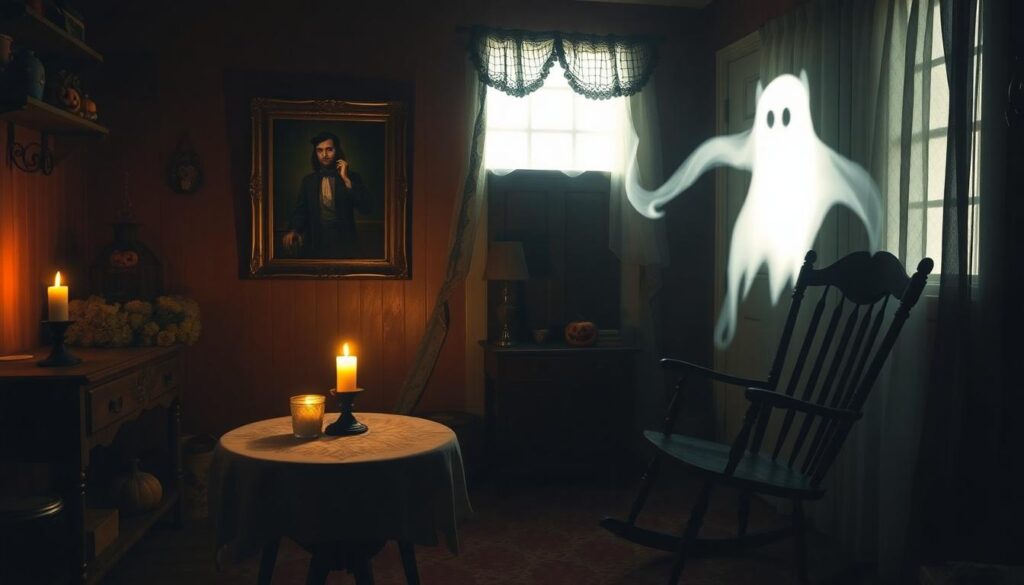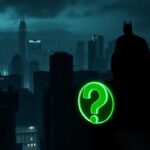Are you ready for a supernatural brain teaser? Ghost riddles combine the thrill of the paranormal with mind-bending puzzles that’ll leave you both spooked and stumped. We’ve gathered the most haunting collection of ghostly enigmas that are perfect for Halloween parties, spooky sleepovers, or anytime you’re in the mood for some spectral fun.
10 Spine-Chilling Ghost Riddles to Test Your Paranormal Knowledge
- The Midnight Visitor: I appear only when darkness falls, standing at the foot of your bed without casting a shadow. Many have reported seeing my translucent form, but when they turn on the lights, I vanish instantly. What am I?
Answer: A ghost/apparition - The Eternal Wanderer: I roam hallways and staircases that lead to nowhere. My footsteps can be heard but never seen. Children sometimes spot me in old houses where tragedy once struck. What spectral phenomenon am I?
Answer: A phantom/residual haunting - The Cold Spot: Wherever I go, temperatures drop significantly. Electronic devices malfunction in my presence, and people feel an inexplicable chill run down their spines. What paranormal occurrence am I?
Answer: A spirit manifestation - The Whispering Portrait: Hung on mansion walls for centuries, people swear my eyes follow them across the room. Previous owners claim to hear me whispering at night, revealing secrets from beyond the grave. What am I?
Answer: A haunted painting - The Vanishing Hitchhiker: Travelers pick me up on lonely roads, usually during stormy nights. I direct them to a exact address, but upon arrival, I disappear from the backseat. The residents reveal I died years ago. What ghostly legend am I?
Answer: A roadside ghost - The Weeping Woman: My cries echo through abandoned buildings, searching endlessly for something lost. Witnesses report seeing my translucent figure dressed in white, with tears streaming down my face. Which famous ghost am I?
Answer: La Llorona - The Phantom Ship: Sailors spot me through the fog, my tattered sails billowing even though the lack of wind. I appear before major storms, never reaching shore, forever doomed to sail the seven seas. What legendary vessel am I?
Answer: The Flying Dutchman - The Cemetery Guardian: I stand watch over graves at night, appearing as a misty figure with glowing eyes. Trespassers report feeling my icy touch on their shoulders when they disrespect the dead. What am I?
Answer: A graveyard specter - The Rocking Chair: Empty, yet I creak back and forth in abandoned nurseries. Parents have heard lullabies coming from rooms where I sit, though no one living is present. What haunted object am I?
Answer: A possessed/haunted rocking chair
The Vanishing Hitchhiker: Can You Solve This Classic Ghost Riddle?
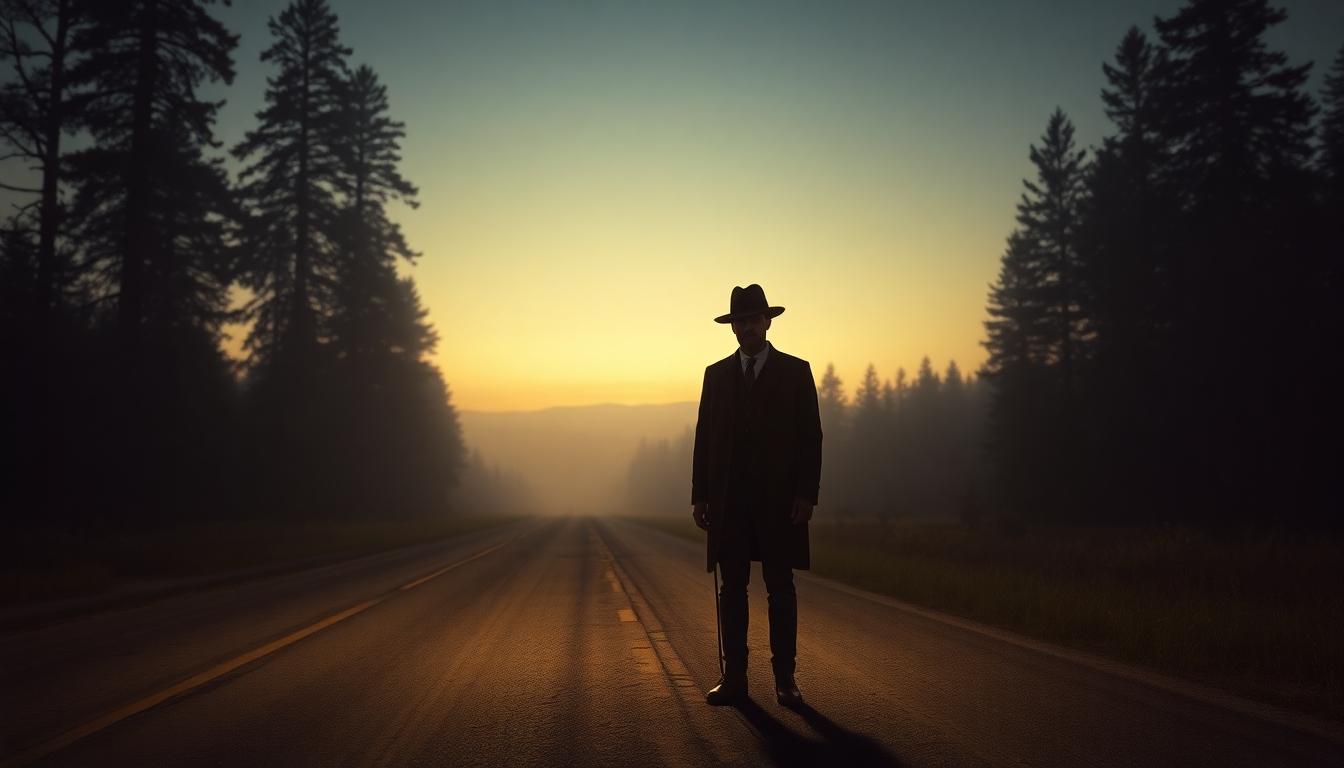
Origins of the Phantom Passenger Tale
The Vanishing Hitchhiker story represents one of folklore’s most enduring ghost tales, with roots stretching back to the era of horse-drawn carriages. Jan Harold Brunvand, a renowned folklorist, brought this legend into the modern spotlight through his 1981 publication, The Vanishing Hitchhiker: American Urban Legends and Their Meanings. His research traces documented versions of this tale back to at least 1876, showing its remarkable persistence in oral tradition. North American culture has embraced this legend particularly enthusiastically, with famous regional variations like Chicago’s “Resurrection Mary” becoming embedded in local lore. We’ve found that this tale’s longevity speaks to its powerful grip on our collective imagination across generations.
Clues Hidden in the Narrative
The classic Vanishing Hitchhiker tale follows a distinctive pattern that provides clues to solve its ghostly riddle. First, drivers encounter a solitary hitchhiker who they pick up, only to have their passenger mysteriously disappear during the journey, sometimes leaving behind personal belongings or clothing as the only evidence of their presence. Second, subsequent investigation invariably reveals the shocking truth: the hitchhiker had died years earlier, with the supernatural encounter often occurring on the anniversary of their death. Third, certain versions incorporate prophetic elements where the spectral passenger delivers important predictions before vanishing, adding another layer to the mystery. Fourth, this narrative appears worldwide with fascinating cultural adaptations, such as Hawaii’s Pele legend where the volcano goddess travels in disguise and rewards kind motorists who offer her rides. We’ve discovered that solving this riddle requires careful examination of these narrative patterns and the connection between the hitchhiker’s disappearance and their historical existence.
The Haunted Mirror Challenge: What Reflects But Casts No Shadow?
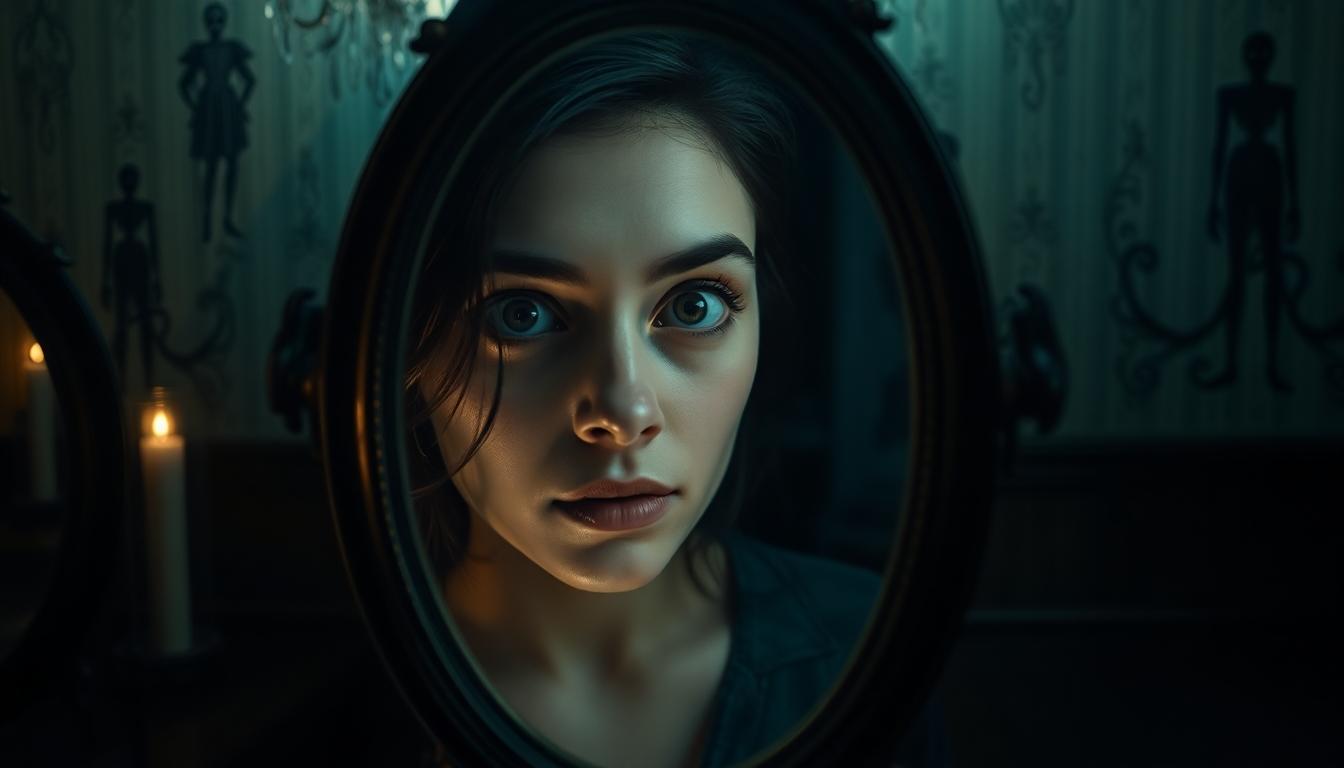
This intriguing ghost riddle plays on the paradoxical nature of spectral reflections in folklore. The answer—a ghostly reflection—comes from legends where spirits inhabit mirrors, mimicking our movements without possessing a physical form.
Historical Background of Mirror Hauntings
Mirrors have served as powerful symbols of portals to other realms throughout human history. Ancient Romans believed breaking mirrors invited seven years of misfortune, a superstition directly connected to the fragmentation of one’s soul. Victorian-era séances frequently used mirrors as conduits for communicating with spirits from beyond the veil. Modern horror tropes continue this tradition, particularly through rituals like “Bloody Mary” that reinforce the concept of cursed or haunted reflections. Social media has recently popularized the “Haunted Mirror Challenge” on platforms like Instagram and YouTube, where participants stare into darkened mirrors attempting to summon supernatural entities, though no scientific evidence supports these claimed paranormal interactions.
Solving the Spectral Reflection Puzzle
The riddle’s solution hinges on several key supernatural elements that make it both challenging and fascinating. Paradoxical imagery forms the core of this puzzle—shadows require physical obstruction of light, something spirits theoretically cannot provide due to their incorporeal nature. Behavioral mimicry represents another crucial aspect, as ghostly reflections supposedly copy human actions while remaining completely intangible. Cultural motifs enhance the riddle’s depth, with broken mirrors and darkened rooms symbolizing fractured reality or trapped souls within reflective surfaces. To effectively solve these types of spectral riddles, we recommend focusing on eliminating logical impossibilities (such as incorporeal beings casting physical shadows) while identifying the supernatural symbolism embedded within the riddle’s structure. This approach allows us to navigate the purposeful contradiction that makes the haunted mirror challenge so compelling as a ghost riddle.
The Midnight Knocking: Who’s at the Door When No One Is There?
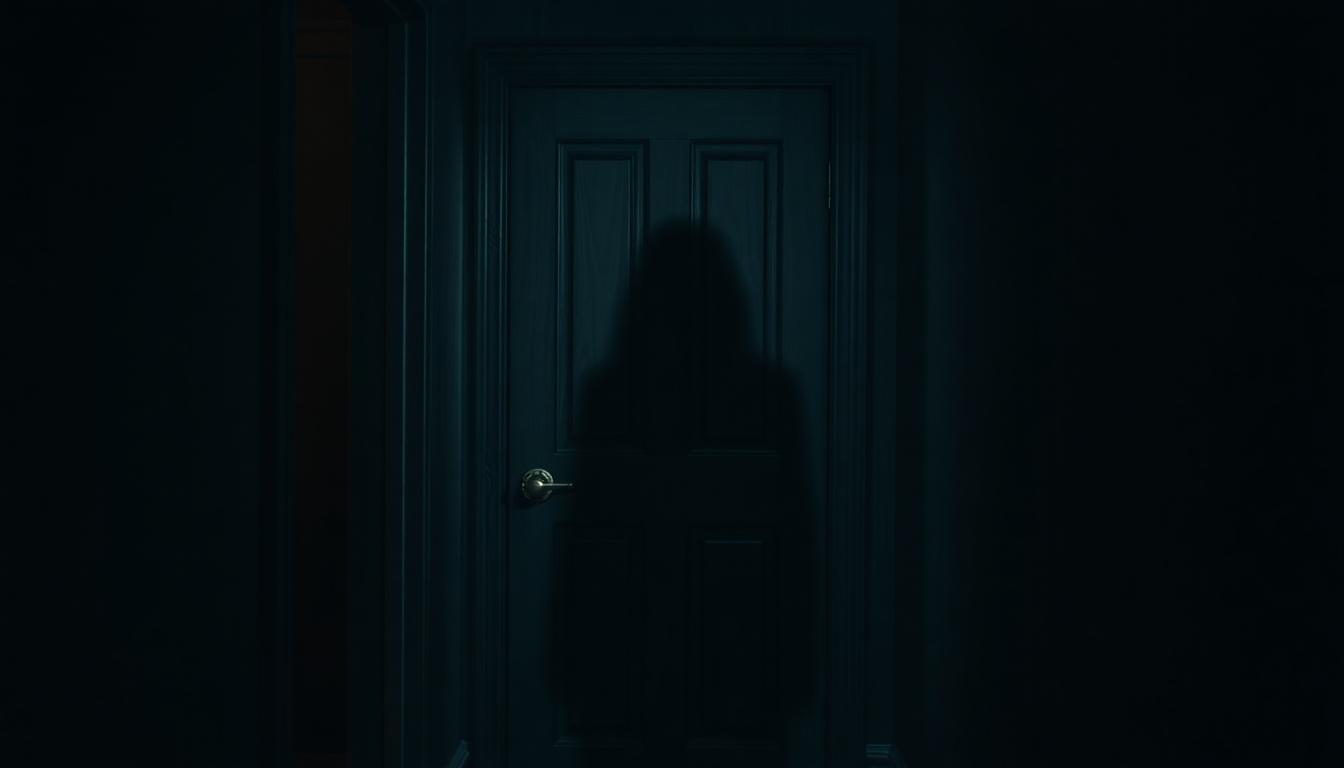
The mysterious phenomenon of unexplained knocking has haunted humanity for centuries. Historical records document many accounts of these eerie disturbances that continue to challenge our understanding of the supernatural industry.
Decoding the Pattern of Ghostly Knocks
Ghostly knocks often follow identifiable patterns linked to exact environmental and psychological factors. Research into Haunted People Syndrome (HP-S) reveals that individuals frequently associate these mysterious sounds with periods of heightened stress or anxiety. Their subclinical unease acts as a catalyst for perceiving anomalous experiences when no visible source exists. Environmental factors play a important role in these occurrences as well. The tectonic strain theory suggests that geological stress, particularly near fault lines, generates electromagnetic fields that some people interpret as paranormal activity. These fields might explain why certain locations experience recurring knocking phenomena that defy conventional explanation. We’ve found that understanding these patterns can help demystify seemingly supernatural events without dismissing the genuine experiences of those who hear them.
Famous Cases of Unexplained Knockings
Throughout history, several well-documented cases of unexplained knocking have captured public attention and scientific interest. The 1519 Chioggia ghost incident in Venice stands as one of the earliest recorded examples, where priests documented nocturnal disturbances including knocks with no visible source. German folklore gave us the term “poltergeist” specifically to describe spirits associated with physical disturbances like knocking sounds. Modern examples include the “San Antonio Disturbances,” featuring recurring knocks and object movements reported consistently over a decade. These episodes frequently align with the psychological states of percipients and their cultural beliefs about spirits. Poltergeist activity commonly centers around adolescents or emotionally charged environments, creating a fascinating intersection between psychological states and seemingly paranormal phenomena. Even though countless investigations, conclusive evidence linking these knocks to supernatural causes remains elusive, leaving the midnight knocker as one of the most enduring ghost riddles in paranormal research.
The Phantom Footprints: Where Do They Lead When They Suddenly Stop?
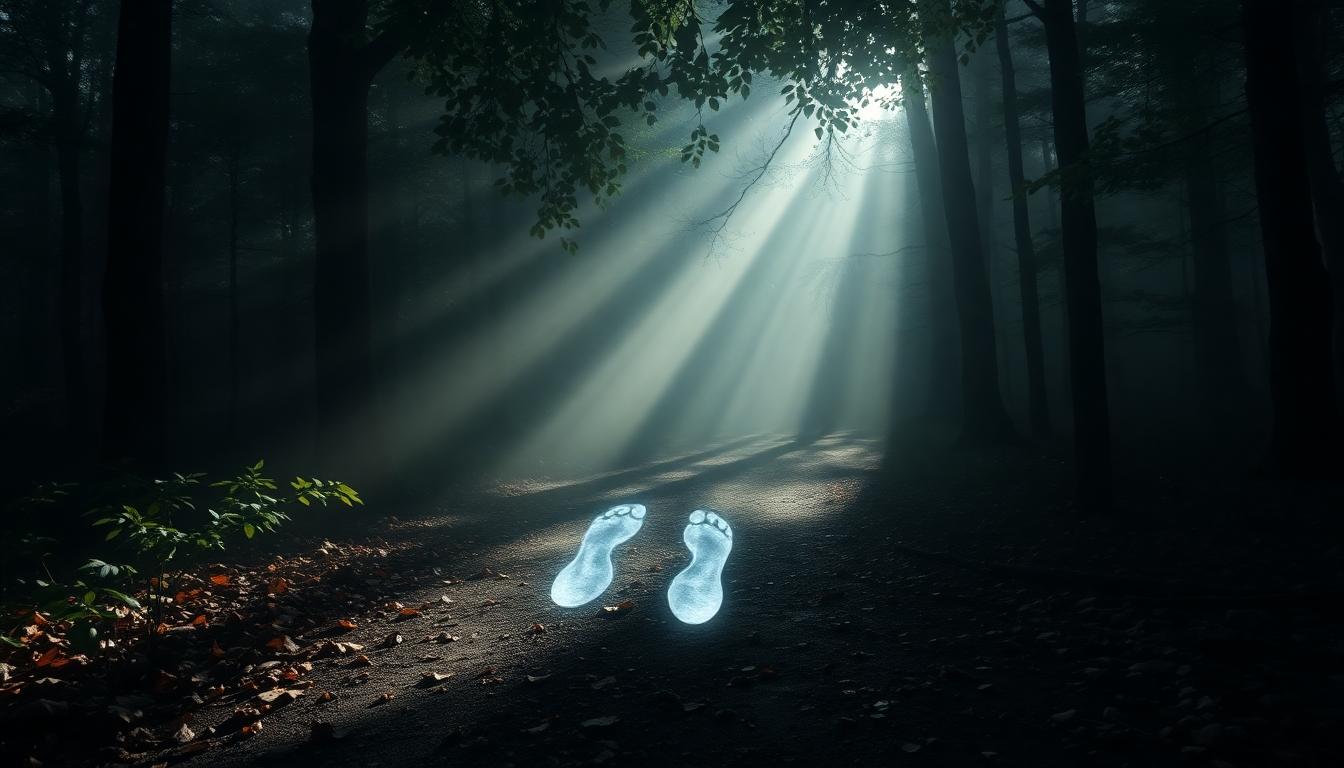
Phantom footprints have long captivated both puzzle enthusiasts and paranormal investigators. These mysterious tracks that appear to vanish mid-step form the basis of some of the most perplexing ghost riddles, challenging our understanding of both logic and the supernatural.
Tracking the Untraceable
Tracking ghostly phenomena presents unique challenges as the evidence often lacks scientific validation. Alleged spectral traces typically manifest as sudden temperature drops or unexplained sounds that defy conventional explanation. Environmental factors frequently mimic what many perceive as paranormal activity, with erratic electromagnetic fields linked to temporal lobe stimulation creating sensations of unseen presences. Infrasound waves below 20 Hz can induce feelings of unease or dread without conscious awareness, explaining why certain locations feel “haunted” even when nothing visible appears. The phantom footprints riddle on YouTube uses this supernatural framework as a clever narrative device for problem-solving, similar to the famous puzzle about 17 goats divided among three sons that employs “ghost” goats to resolve inheritance conflicts.
Scientific Explanations vs. Paranormal Theories
Scientific research offers several compelling explanations for phenomena often attributed to ghostly footprints. Neurological factors such as temporal lobe epilepsy and sleep paralysis can trigger vivid hallucinations that include perceived apparitions or sensations of pressure. Environmental triggers, particularly toxic mold spores commonly found in older buildings, may cause neurological symptoms that mimic haunting experiences. Sensory illusions created by low-frequency vibrations or subtle light effects in dimly lit settings can significantly distort human perception, making ordinary occurrences seem supernatural.
Paranormal theorists, meanwhile, propose alternative explanations that science has yet to validate. They often attribute these mysterious footprints to unresolved spiritual energy or interdimensional beings crossing into our reality. Proponents suggest that footprints ending abruptly might indicate points where spirits transition between different planes of existence. No peer-reviewed studies have validated these claims, creating a fascinating tension between scientific explanation and supernatural belief that keeps ghost riddles perpetually intriguing.
The Whispering Room Riddle: What Speaks Without a Voice?
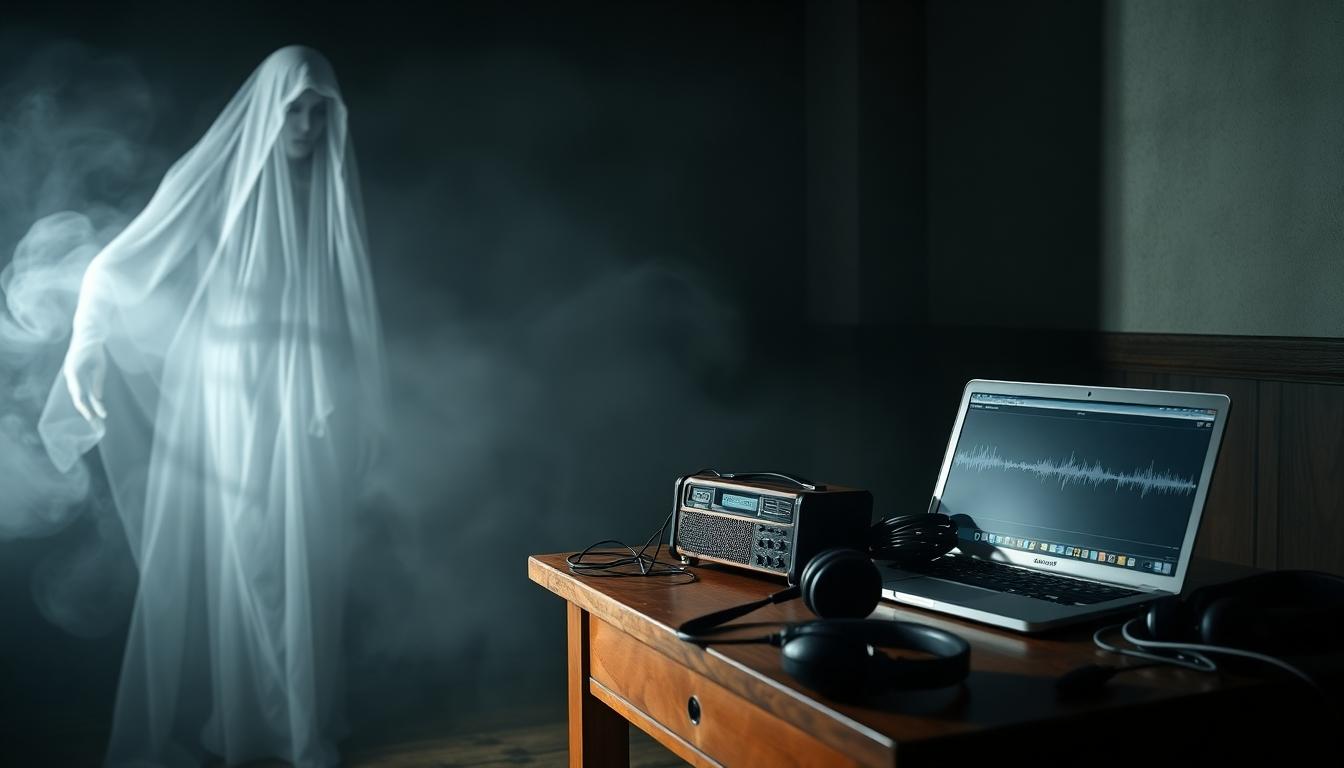
The Whispering Room Riddle taps into one of the most intriguing aspects of paranormal investigation – communications that seem to emerge from nowhere. This fascinating enigma connects directly to Electronic Voice Phenomena (EVP), where sounds in recordings are interpreted as spirit voices even though having no physical source.
Analyzing EVP (Electronic Voice Phenomenon) Clues
EVP recordings typically contain brief words or phrases that ghost hunters often discover hidden within static or background noise. These subtle audio fragments are considered by paranormal enthusiasts as compelling evidence of spirit communication. Investigators frequently spend hours reviewing recordings, isolating unexpected sounds that weren’t audible during the actual recording session. Most EVPs feature short, cryptic messages rather than lengthy conversations, making their interpretation a challenge even for experienced researchers. Skeptical scientists attribute these phenomena to auditory pareidolia, our brain’s natural tendency to find patterns and meaning in random noise. Even though this scientific explanation, countless paranormal teams continue to use EVP sessions as a primary method for attempting spirit contact during investigations.
Solving the Whispered Message
Deciphering EVP messages requires careful audio analysis to distinguish potential spirit voices from environmental contamination. We recommend using audio enhancement software to clarify recordings while maintaining their original integrity. Multiple investigators should independently review the same recordings before comparing interpretations, as EVP analysis is highly subjective. Scientists suggest that many supposed spirit messages are actually equipment artifacts, radio frequency interference, or psychological misperceptions rather than paranormal communications. The controversial nature of EVPs makes them perfect subjects for ghost riddles, sitting at the intersection of technology and the supernatural. Experienced investigators often develop protocols to minimize contamination, such as conducting control recordings and documenting all potential sources of ambient noise. Even though decades of research, EVP remains in a scientific gray area, neither definitively proven nor disproven as evidence of the paranormal.
The Cold Spot Mystery: Why Does Temperature Drop When Spirits Appear?

The Thermodynamics of Hauntings
Cold spots have become one of the most intriguing aspects of paranormal investigations, baffling both ghost hunters and scientists alike. From a physics perspective, these sudden temperature variations occur without any apparent influence from heating or cooling systems in the vicinity. Paranormal researchers theorize that spirits potentially draw thermal energy from their surroundings to manifest, creating localized cooling effects that investigators can detect. These unexplained temperature drops lack scientific confirmation through peer-reviewed studies, yet they remain consistent features in countless ghost encounter reports worldwide. While natural explanations such as drafts or insulation gaps typically account for most temperature anomalies, some cases continue to defy conventional explanation, particularly when the cold spots appear in sealed environments with stable ambient conditions.
Using Temperature Changes to Detect Presence
Ghost hunters employ several sophisticated tools to document and analyze these mysterious temperature fluctuations. Infrared cameras stand as primary detection instruments, providing real-time visualization of ambient temperature changes that might indicate spiritual activity. Teams often use dual-sensor thermometers to track simultaneous changes in both air and surface temperatures, helping distinguish between environmental factors and potentially paranormal phenomena. Thermocouples offer another precise measurement option, specifically designed to monitor microclimates in areas where cold spots frequently appear, such as doorways, staircases, or corners of rooms. Even though the technological approach to temperature monitoring, no scientific consensus currently links these thermal anomalies directly to spiritual presence. The application of infrared thermography has become standard practice in paranormal investigations, allowing researchers to map thermal patterns throughout allegedly haunted locations. This methodical approach to cold spot detection aligns with observational logic emphasized in ghost-hunting protocols, though environmental factors can often replicate conditions attributed to supernatural causes.
The Moving Object Conundrum: What Shifts When No One’s Looking?
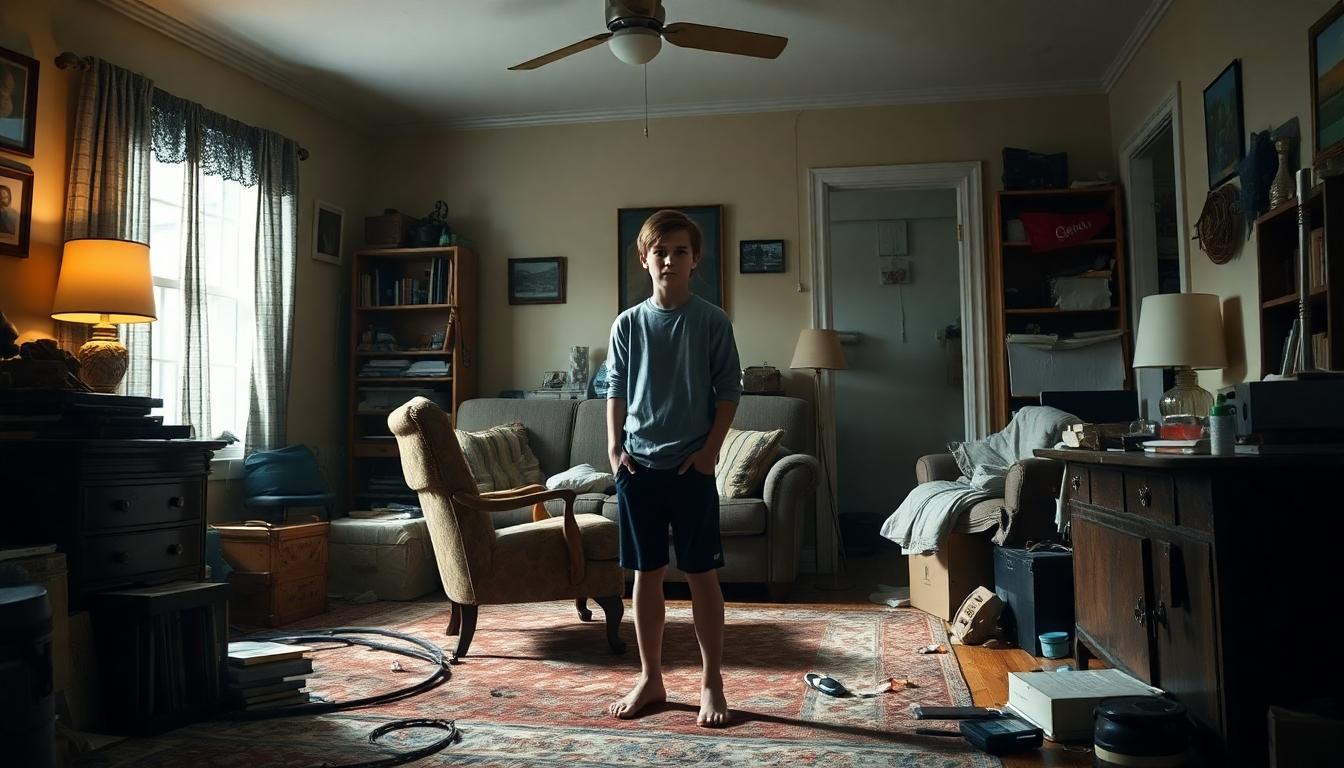
Have you ever returned to a room to find something not quite where you left it? The phenomenon of objects seemingly moving on their own represents one of the most compelling yet scientifically challenging ghost riddles in paranormal investigation. Research in parapsychology doesn’t provide concrete evidence supporting the idea of ghosts moving objects, but studies like the Philip Experiment reveal how suggestion and belief can powerfully influence our perceptions of paranormal phenomena.
Patterns in Poltergeist Activity
Poltergeist activity follows distinctive patterns that researchers have documented for decades. Contrary to popular belief, these phenomena are frequently attributed to psychological factors rather than supernatural causes. Chris French, a psychologist specializing in anomalous experiences, suggests that psychological states including sleep paralysis and inattentional blindness can significantly contribute to reports of ghostly encounters. Objects reportedly moving without human intervention typically occur in homes with adolescents or individuals experiencing psychological stress. The empirical evidence doesn’t support poltergeist activity as genuinely paranormal but instead points to human psychological dynamics as the driving force behind these experiences. Understanding these patterns helps us decode the true nature of seemingly supernatural object movements.
Testing Your Detection Skills
We can improve our ability to distinguish between genuine anomalies and psychological tricks by testing our perception skills. Experiments focused on inattentional blindness demonstrate how people frequently miss obvious stimuli in their environment, suggesting that perceptions of paranormal phenomena might actually result from cognitive limitations rather than ghostly presence. Your detection abilities can be enhanced by understanding these psychological mechanisms that influence perception. Try setting up controlled experiments in your own space by photographing room arrangements before leaving and comparing upon return. Document environmental factors like drafts, vibrations from nearby roads, or temperature fluctuations that might cause subtle movements. Learning to identify these natural explanations strengthens critical thinking skills while providing logical answers to seemingly mysterious object displacements.
The Ghostly Portrait Riddle: Why Do the Eyes Follow You?
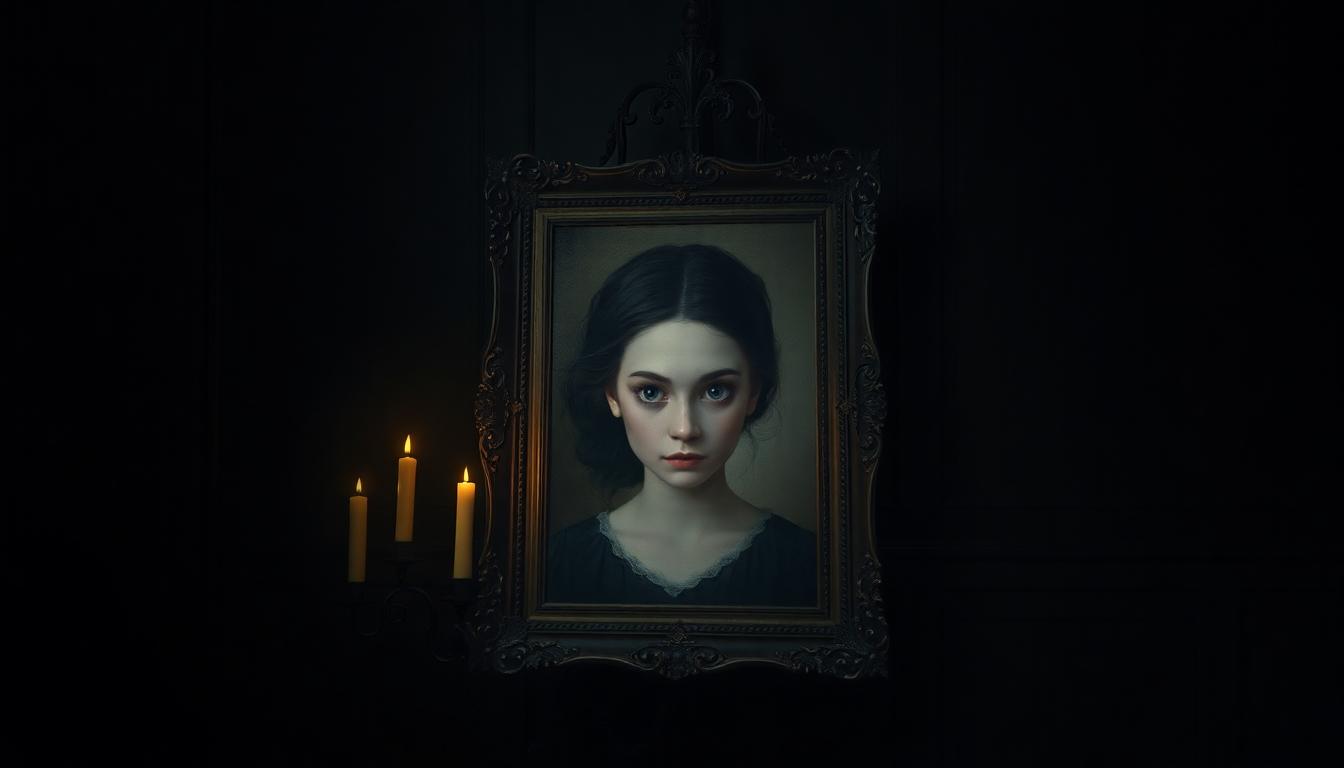
Have you ever felt a portrait’s eyes tracking your movement across a room? This spine-chilling sensation has nothing to do with supernatural forces, but rather relies on clever artistic techniques and the way our brains process visual information.
The Art of Haunted Paintings
Artists create the “following eyes” effect through exact painting techniques that exploit our perception. When painters render faces with a forward-facing gaze and centered pupils, they establish the foundation for this compelling illusion. Victorian-era portraits often employed low-light palettes featuring deep blacks and grays to enhance the eerie atmosphere. These historical artworks utilized asymmetrical textures and specialized glazing techniques that dynamically interact with ambient lighting conditions. The reflective surfaces created by these methods would respond differently to candlelight or dim lighting, producing uncanny visual effects that seem to animate the painted subject. We can observe how these calculated artistic choices manipulate perception, making static images appear eerily responsive to the viewer’s movement.
Optical Illusions or Something More?
The illusion of being watched by a portrait stems from sophisticated visual trickery rather than paranormal activity. This 2D optical illusion works because our brains misinterpret visual cues due to parallax shifts as we move around the artwork. Famous illusions like Pepper’s Ghost demonstrate how controlled lighting and reflections can convincingly simulate apparitions. Artists frequently employ trompe-l’œil (deceive the eye) techniques that exploit our brain’s dependence on depth perception cues, including shading and linear perspective, to create false dimensionality. Our susceptibility to pareidolia—seeing meaningful patterns in random stimuli—further enhances this effect. Three key factors amplify this ghostly experience: directional lighting that enhances shadow play and alters perceived depth; viewing angle changes that make fixed facial features appear mobile; and cognitive bias that primes our brains to detect anomalies when we expect something “haunted.” We can understand this phenomenon through established principles in optical physics and perceptual psychology rather than supernatural explanations.
The Phantom Melody: What Tune Plays When All Instruments Are Silent?
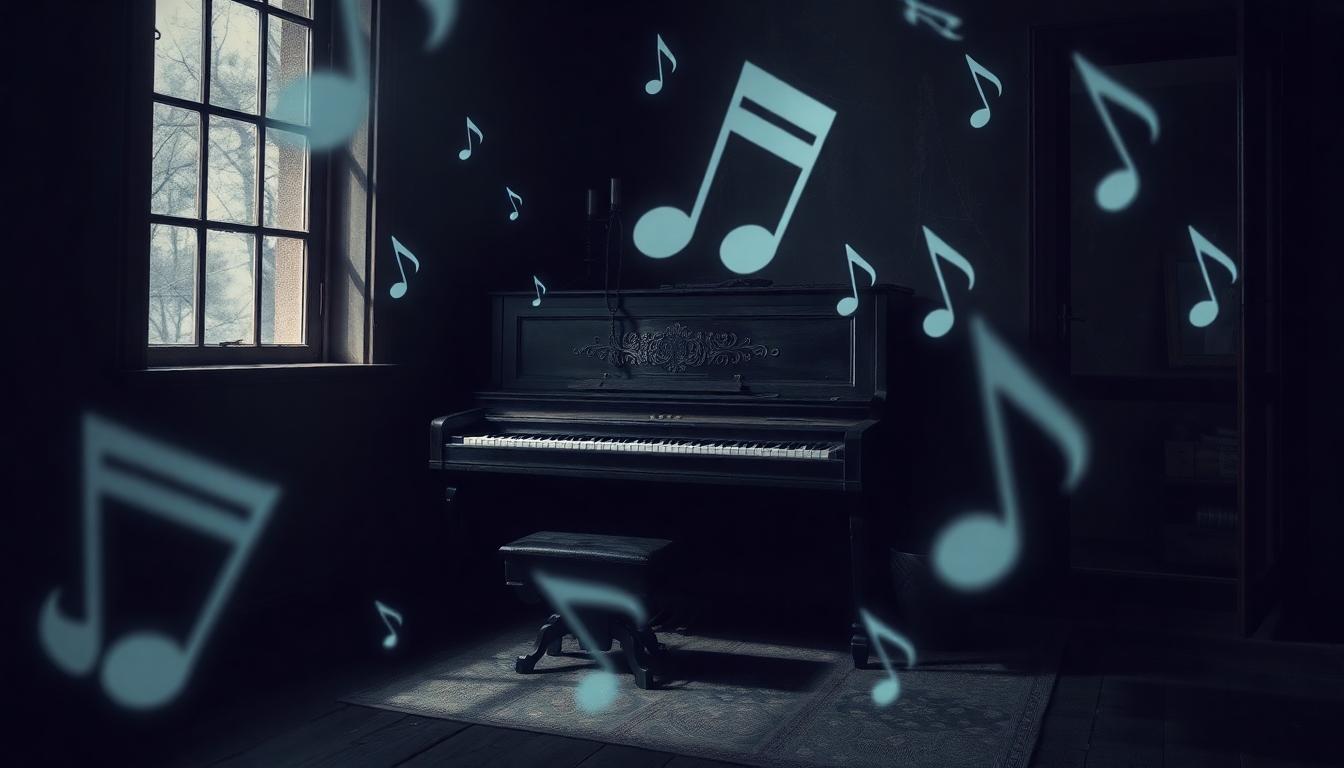
The phantom melody represents one of the most intriguing paranormal auditory phenomena in ghost lore. This mysterious soundscape emerges when conventional explanations fail, leaving witnesses to question what tunes might play when all instruments fall silent.
Famous Cases of Ghostly Music
Ghostly music manifests in paranormal folklore as unexplained sounds that defy rational explanation. Traditional ghost lore frequently references phantom music as spectral remnants of past events, though exact melodies typically remain unnamed in documented cases. Historical accounts occasionally mention ghostly choirs or instrumental performances in reportedly haunted locations, creating an eerie soundtrack to supernatural encounters. Environmental factors often get ruled out in these cases, leaving witnesses convinced they’ve experienced something beyond normal explanation. The “Dead Sea” riddle metaphorically connects ghostly themes to eerie environments, though it doesn’t describe literal musical phenomena. Documented cases generally classify these auditory experiences as residual hauntings—repetitive echoes of past events imprinted on a location.
Identifying the Spectral Composer
Spectral composers exist primarily as conceptual entities in riddle contexts, serving more as wordplay than verifiable musical sources. Paranormal investigators typically attribute phantom music to unidentified sources such as residual energy or environmental anomalies rather than exact ghostly composers. Ghost riddle collections emphasize humor and metaphorical logic, as seen in examples like “What’s a ghost’s preferred route on the road? The Dead End.” Scientific approaches to these phenomena focus on environmental acoustics and psychological factors that might explain perceived sounds without supernatural intervention. Audio recording technology has advanced significantly, yet definitive evidence linking phantom melodies to spectral sources remains elusive in paranormal research. Distinguishing between actual acoustic anomalies and psychological interpretations remains a central challenge when investigating reports of ghostly music.
Solving the Ultimate Ghost Riddle: Are You the Ghost?
Ghost riddles continue to captivate our imagination bridging the gap between logical reasoning and supernatural mystery. They challenge us to explore the unknown while sharpening our critical thinking skills.
Whether you’re analyzing phantom footprints vanishing mid-step or decoding the science behind ghostly portraits that seem to follow your movements these enigmas offer more than just spine-tingling entertainment.
We’ve journeyed through whispering rooms cold spots and midnight knockings unveiling both the psychological and potential paranormal explanations behind these phenomena. The greatest ghost riddle may be the one that asks if the true mystery lies within our perception rather than the supernatural.
Ready to become a master ghost riddle solver? The answers await those brave enough to look beyond the veil of the ordinary.
Frequently Asked Questions
What are ghost riddles and why are they popular?
Ghost riddles combine supernatural themes with brain-teasing puzzles, making them perfect for Halloween parties or spooky gatherings. They tap into our fascination with the unknown while challenging our problem-solving abilities. Their popularity stems from the universal appeal of both ghost stories and riddles, creating an engaging experience that’s both entertaining and slightly unnerving.
Is there any scientific explanation for “cold spots” associated with ghostly presence?
Most cold spots have natural explanations like drafts, air conditioning vents, or thermal differences in building materials. However, paranormal researchers theorize that spirits might draw thermal energy from surroundings, creating localized cooling. While sophisticated equipment like infrared cameras can document temperature fluctuations, no scientific consensus currently links cold spots directly to supernatural presence.
What is the “Vanishing Hitchhiker” legend?
The Vanishing Hitchhiker is a classic ghost tale dating back to horse-drawn carriage days. The story typically involves a driver picking up a passenger who mysteriously disappears during the journey. Later, the driver discovers the hitchhiker died years earlier. Popularized by folklorist Jan Harold Brunvand in 1981, this legend has regional variations worldwide, including Chicago’s famous “Resurrection Mary.”
Can mirrors actually be haunted as suggested in the “Haunted Mirror Challenge”?
There’s no scientific evidence supporting haunted mirrors, despite their prominence in folklore and supernatural traditions. The Haunted Mirror Challenge became a social media trend based on these legends, playing on our psychological discomfort with reflections. Mirror hauntings likely stem from our natural unease with self-reflection and the psychological impact of seeing ourselves in dim lighting or unusual circumstances.
What causes the unexplained knocking phenomenon described in “The Midnight Knocking”?
Unexplained knocking has multiple potential explanations. Environmental factors like house settling, temperature changes, or plumbing issues can create knocking sounds. Psychological factors including “Haunted People Syndrome” might influence perception. Some researchers propose the tectonic strain theory, suggesting geological stress generates electromagnetic fields interpreted as paranormal activity. Despite numerous investigations, conclusive evidence linking these knocks to supernatural causes remains elusive.
Are phantom footprints real or just misidentified natural phenomena?
Phantom footprints that appear to vanish mid-step typically lack scientific validation. Environmental factors like partial impressions in suitable surfaces often create the illusion of disappearing tracks. Scientific explanations include neurological factors, environmental triggers, and misperception. Paranormal theories attribute these footprints to unresolved spiritual energy or interdimensional beings. The evidence remains inconclusive, making phantom footprints an ongoing mystery.
What is EVP and how does it relate to ghost riddles?
Electronic Voice Phenomena (EVP) are audio recordings containing brief, cryptic messages interpreted as spirit voices. They’re central to “The Whispering Room Riddle” as they represent communications seemingly emerging from nowhere. Scientists attribute these sounds to auditory pareidolia—our tendency to find patterns in random noise. EVP analysis requires careful audio examination and enhancement software, though interpretation remains highly subjective, making them perfect material for ghost riddles.
Why do objects seem to move on their own in haunted locations?
Objects appearing to move independently lack concrete scientific evidence supporting ghostly intervention. Studies like the Philip Experiment demonstrate how suggestion and belief influence perceptions of paranormal phenomena. Many reported cases involve subtle movements attributed to overlooked environmental factors like vibrations, air currents, or uneven surfaces. Psychological factors, including expectation and heightened awareness in supposedly haunted locations, significantly contribute to these perceptions.
What creates the illusion of “following eyes” in portraits?
The unsettling sensation of portrait eyes following viewers results from artistic techniques rather than supernatural forces. Artists create this effect by painting subjects looking directly forward with techniques that maintain the direct gaze from all viewing angles. Victorian-era portraits amplified this effect through low-light palettes and specialized glazing. The phenomenon is an optical illusion where our brains misinterpret visual cues, creating the perception of being watched.
What explanations exist for phantom melodies or ghostly music?
Phantom melodies often occur when conventional sound explanations fail. Scientific explanations include sound waves traveling unusually through architectural features, auditory pareidolia, or environmental factors creating resonance patterns. Paranormal investigators attribute these experiences to residual energy or environmental anomalies capturing past sounds. While numerous historical cases exist, definitive evidence linking these mysterious melodies to supernatural sources remains elusive.

